I want to formulate this problem in NuSMv :

A user can be in one of these three states: U-need,U-using,U-sad(representing a user that needs a service, starts using and he/ she is happy with the quality of this service or starts using and he/ she is sad because of the bad quality of his service respectively).
A service can be in one of these three states: S-offer,S-good,S-bad; ;(representing a service that is not in use, a service offering a good quality or a service offering a bad quality respectively).
A set of events : look,use,stop,monitor,detect-p,remedy-p , representing looking for a service, start using a service, stop using a service , monitoring the quality, detecting a problem in a service and remedy the problem respectively.
this is my SMV code:
MODULE main VAR Service: {S-offer,S-good,S-bad}; User:{U-need,U-using,U-sad}; Event:{look,use,stop,monitor,detect-p,remedy-p}; ASSIGN init(Event) := look; init(User) := U-need; init(Service) := {S-offer,S-good}; next(Event) := case (Event = look) & (Service=S-offer) : look; (Event = look) & (Service=S-good) : use; (Event = use) & (Service=S-good) : monitor; (Event = monitor) & (Service=S-good) : {monitor,stop,detect-p}; (Event = detect-p) : remedy-p; (Event = remedy-p) : monitor; TRUE:Event; esac; next(User) := case (Event = look) & next(Event)=look : U-need; (Event = look) & next(Event)=use : U-using; (Event = use) & next(Event)=monitor : U-using; (Event = monitor) & next(Event)=monitor : U-using; (Event = monitor) & next(Event)=stop : U-need; (Event = monitor) & next(Event)=detect-p : U-sad; (Event = detect-p ) & next(Event)=remedy-p : U-using; TRUE:User; esac; next(Service) := case (Event = look) & next(Event)=look : S-offer; (Event = look) & next(Event)=use : S-good; (Event = use) & next(Event)=monitor : S-good; (Event = monitor) & next(Event)=monitor : S-good; (Event = monitor) & next(Event)=stop : S-offer; (Event = monitor) & next(Event)=detect-p : S-bad; (Event = detect-p ) & next(Event)=remedy-p : S-good; TRUE:Service; esac;
-I want to confirm that this code represents the problem I described above - I represent both the events and the states of services and users as variables, is this correct?